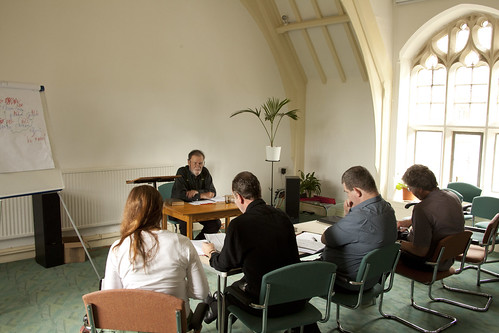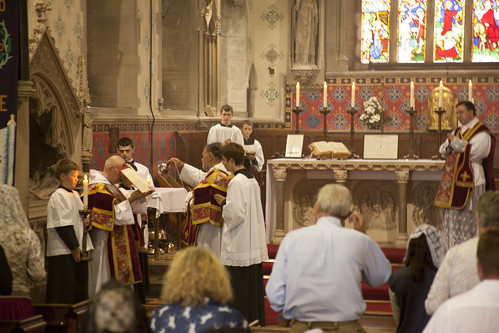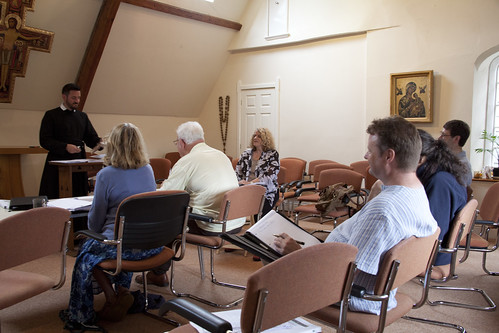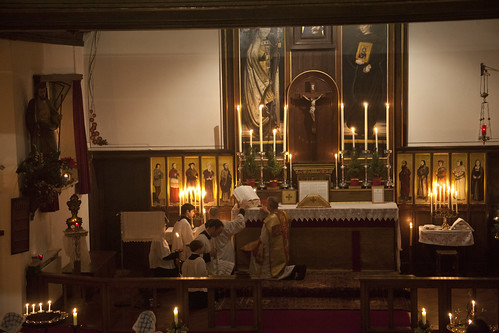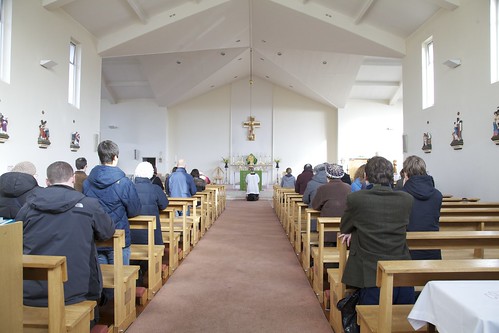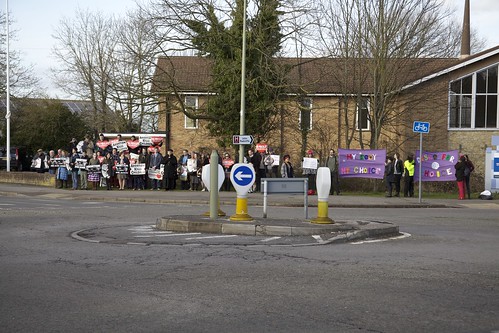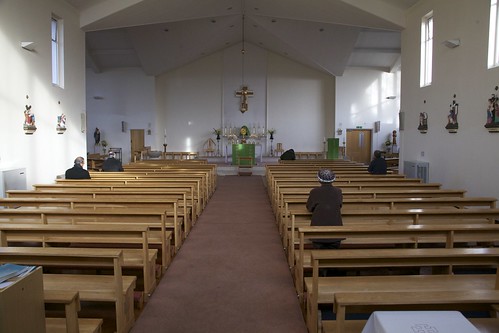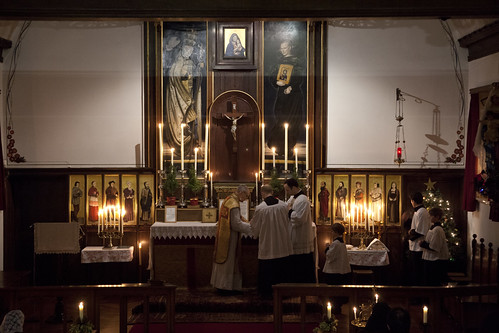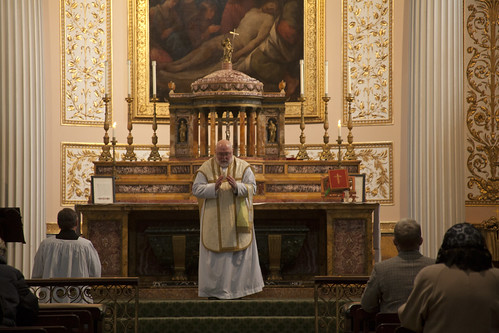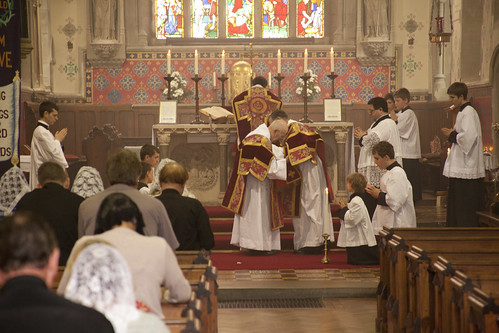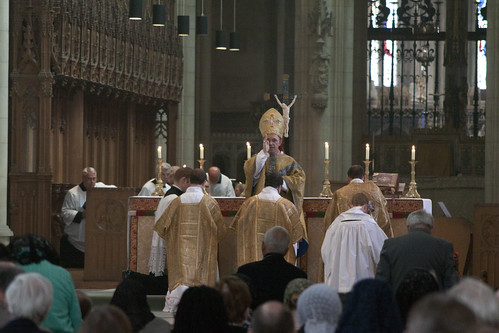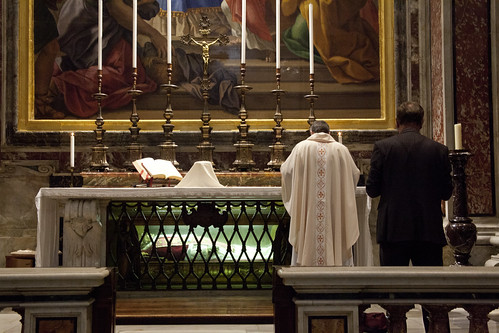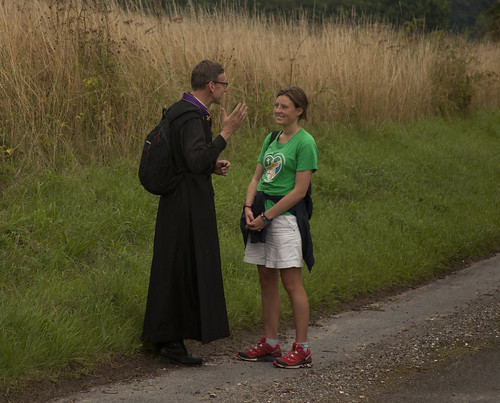
Guide to this series:
In my
last post I said that a compromise missal, with 'the best' of the Ordinary Form and of the Extraordinary Form, could turn out to be something which doesn't allow the Faithful to engage with it effectively, in either the typical Traditional fashion or the typical
Novus Ordo fashion.
The idea that you can make the Traditional Latin Mass easier to participate in by making various changes - using the vernacular, having silent prayers aloud, having the priest face the people - is based on the idea that there is only one kind of meaningful participation, and that is an intellectual, verbal participation: a comprehension of the liturgy by a grasp of the liturgical texts word by word, as they are said.
But, as I argued, this is not so. There is another form of participation, which makes use of a much broader range of means, and communicates not only at an intellectual, verbal level, but at a range of non-verbal levels. Anyone familiar with the Traditional Mass knows what 'Ecce Agnus Dei' means, for example, or 'Nobis quoque peccatoribus': these things work at the verbal level. We may agree that you can get a lot more verbal communication by translating the whole thing into banal English and amplifying it, but this will wreck the sense of the sacred, and you will actually end up with less communication, overall, verbal and non-verbal, than before.
I also warned that something similar can happen from the other direction. If you take the
Novus Ordo and put it into Latin, for example, you instantly take away much of the intellectual, verbal engagement for which the 1970 Missal was designed. Will you create a sense of the sacred to compensate? Perhaps. But the whole rite has been set up wrong, from that point of view, and most Catholics in the pew will not find it at all obvious how to allow themselves to engage with it at the appropriate way, in the context of the mixed signals they are getting from the ceremonies and texts.
So let's think about the
Novus Ordo in Latin. I went to this for years before I discovered the Traditional Mass. Like many people I found the insistent demands of the standard
Novus Ordo, to engage with it 'actively' in various ways, off-putting, and the English translation jarring. The Latin NO dimmed the interrogator's lamp a bit. But the form of engagement we were encouraged to have with this was still very much intellectual. We all had little Latin-English booklets and the words were all aloud, with the optional exception of the Offertory. (Actually there are still a few other lines of silent priestly prayer in the
Novus Ordo, but the average pew-sitter won't even notice them.) We were prepared for the Latin Canon, in fact, by a typically 'engaging' Liturgy of the Word, in English, with bidding prayers and lay readers and all the rest. And as soon as the Consecration had taken place, we had to make the 'Eucharistic Acclamation'. There was no time for silent adoration.
For me, it was in some ways a preparation for the Extraordinary Form, which was (as far as I knew) not locally available. It got me used to to idea of a liturgical language, for example, and familiarised me with a number of the texts. But while popular with a particular constituency, I was conscious that most Catholics didn't like it. And its constituency had easily identifiable characteristics. I don't want to deal in stereotypes, but the fact is that English Catholic parishes are plagued by the phenomenon of different Masses on Sunday being colonised by different social groups and classes, who then fail to mix with each other. I will just say that the Latin
Novus Ordo option didn't exactly help.
The English
Novus Ordo is an intellectual exercise, but it is a very easy one. The Latin
Novus Ordo is an intellectual exercise, and a much harder one. It really helps if you've got a bit of Latin, for example; if you don't you'll struggle to find your place in the booklet. It is easy for people to assume that the Traditional Mass, which is of course has
even more Latin, is on this same spectrum, but a lot further along in the direction of 'difficulty'. I don't want to disparage the efforts of those who over the decades have kept the tradition of liturgical Latin alive in the Church, but I have to say it.
The Latin Novus Ordo can very easily put people off the Traditional Mass.
Actually, I know that it has done, I know people of whom this is true. Nine times out of ten, when
someone talks about 'elitist' liturgy he is, in fact, basing his assumptions on the Latin
Novus Ordo.
The Latin
Novus Ordo can be a bridge between the English
Novus Ordo and the Traditional Mass: perhaps it was for me. But for other people it can be something else, something more like the 'false light' put up by wreckers to distract ships from the lighthouse and lure them to their doom. It can put people off the whole idea of a Latin liturgy in same way that overzealous evangelical Protestants can put people off the whole idea of Christianity.
The TLM is not, in fact, more 'difficult', and by the same token it is not more exclusive. You can test the hypothesis for yourself by going to a few regular EF Sunday Masses: you will generally find a complete social and educational mix in the congregation, and unless it is at a non-child-friendly time, you will find lots of children there. The children won't lie to you: talk to them and you will find that they can engage with the liturgy at their own level. Knowledge of Latin is of course a good thing, but lack of Latin is no more a bar to participating in the ancient Mass today than it was for our ancestors, for the simple reason that this form of the Mass uses a broad range of verbal and non-verbal means of getting the message across.
If we are going to talk about the future, of what there is some chance of really working with the bulk of ordinary Catholics, the Reform of the Reform is based on a terrible mistake. The mistake is to assume you can preserve what is attractive about one Form while combining it with what is attractive about the other. You can't, because they are incompatible. As I said in an earlier post in the series, and as a series of Position Papers have argued, in the EF it is
precisely those things which impede verbal communication which facilitate non-verbal communication: Latin, silence, worship
ad orientem and so on. An attempt to ramp up verbal communication in the EF will destroy what makes it attractive.
Similarly, an attempt to bring in more 'sense of the sacred' in the OF will radically reduce its big selling point: the ease of verbal communication. I'm not saying that it's not a good idea to try, I'm just saying you need to be terribly careful. The easiest thing in the world is to turn your parish
Novus Ordo into something which for the average pew-sitter seems a bit of a struggle. For example, are you seriously going to ask them to make Latin responses which
vary between three options, on no very predictable basis (the 'Eucharistic acclamations')? Do you want to make it impossible for them to become familiar with the Canon by having four (and in theory many more) different options? Do you want them to wonder if they'll be expected to say 'Peace be with you' to their neighbours in Latin (or should it be, 'Et cum spiritu tuo')?
If you want something with the potential to attract the broadest possible range of people, we already have it in the Traditional Mass. It is perfectly true that some people who attend it for the first time don't like it: they try to use the usual
Novus Ordo form of participation and it falls flat. This is why it can take a bit of getting used to, and it is also why it is important to talk about participation and counter the assumption that the only form of participation is word-by-word intellectual comprehension. The answer is definitively not to adapt the TLM to accommodate this form of participation, because you will simply destroy what you are trying to promote.
The reality is that a much higher proportion of people will see the point of it if they attend a few times. This is why it is often so successful to have the TLM alongside the Ordinary Form in a parish, so parishioners can try it out from time to time; gradually, more and more come to like it. If this were the situation across the country, we would be, in terms of liturgical restoration, in business. At the moment, of course, only a tiny minority of Catholics have the chance to attend it at all.
Tomorrow, in the final post of this series, I will talk about another Reform of the Reform option: the transitional liturgical books used in 1965.

